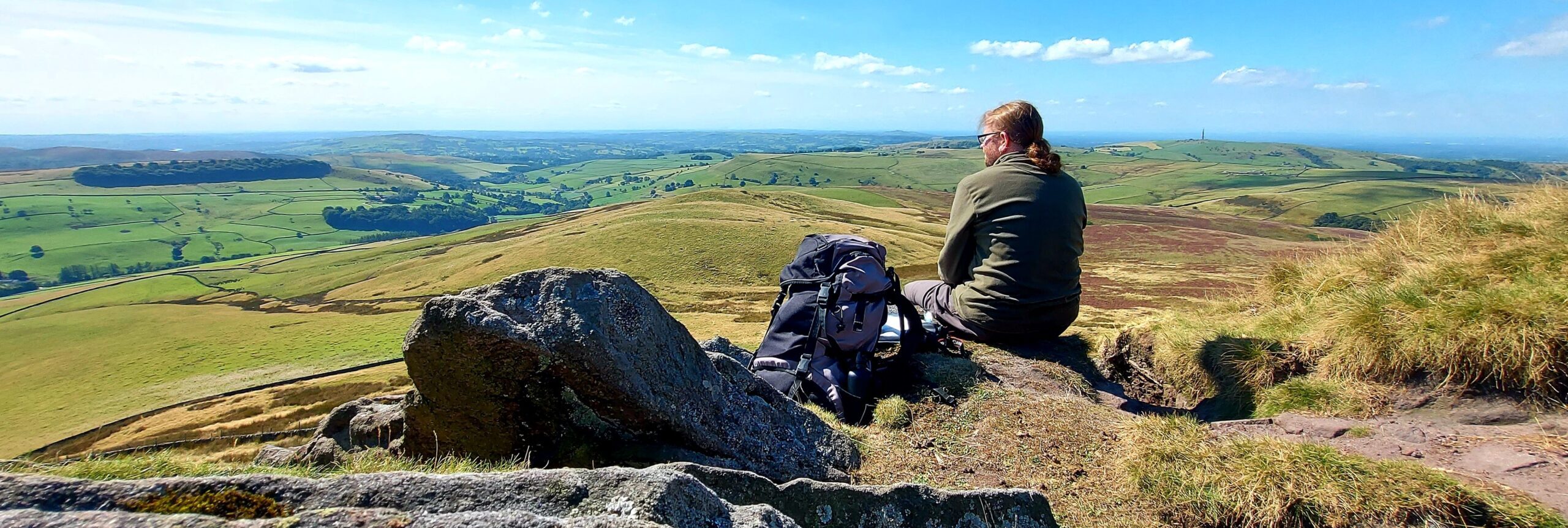Approximate Location
OS Grid Reference: SJ 95568 67626
Latitude / Longitude: 53°12′20″N , 002°04′04″W
During the desperate flight from Shuttlingslow, the fugitives raced across Piggford Moor and Hammerton Knowl but here their enemies caught up with them (Weirdstone, Chapter 20 – Shuttlingslow). Durathror made a stand and killed the remaining hounds of the Morrigan. Meanwhile, the others stumbled eastwards towards Brown Hill (un-named in the book). Susan was assailed by the mara who grasped her by the wrist. However, contact with the Mark of Fohla – given to Susan at Redesmere by Angharad Goldenhand – caused a remarkable scene to unfold…
“Beside her was the mara, and it was shrinking! Like a statue of butter in a furnace heat it writhed and wasted. Its contours melted into formlessness as it dwindled. No sound did it utter again, save a drawn-out moan as movement finally ceased. And there on the moor-top stood a rough lump of rock.”
Garner, A., 1960 (1989 edition), The Weirdstone of Brisingamen. William Collins / Lions. London. p212.

This scene is akin to that in Gomrath, Chapter 14 – The Wild Hunt where Alan Garner created his own origin myth to explain the cracked appearance of Goldenstone. In reality, there is a tooth of rock standing on the eastern ridge of Brown Hill, but it is a standing stone – measuring 1.3 metres in length by 1.1 metres in height – associated with a prehistoric bowl barrow known as the Bullstones. This low mound of earth and stones survives to about 0.25 metres in height and is approximately 11.5 by 10 metres across. It was investigated by the antiquarian Dr John Dow Sainter during the 1870s. The cremated remains of an individual were found at 0.9 metres depth, alongside a flint knife and arrowhead, beneath an upturned urn at the centre of the barrow.

